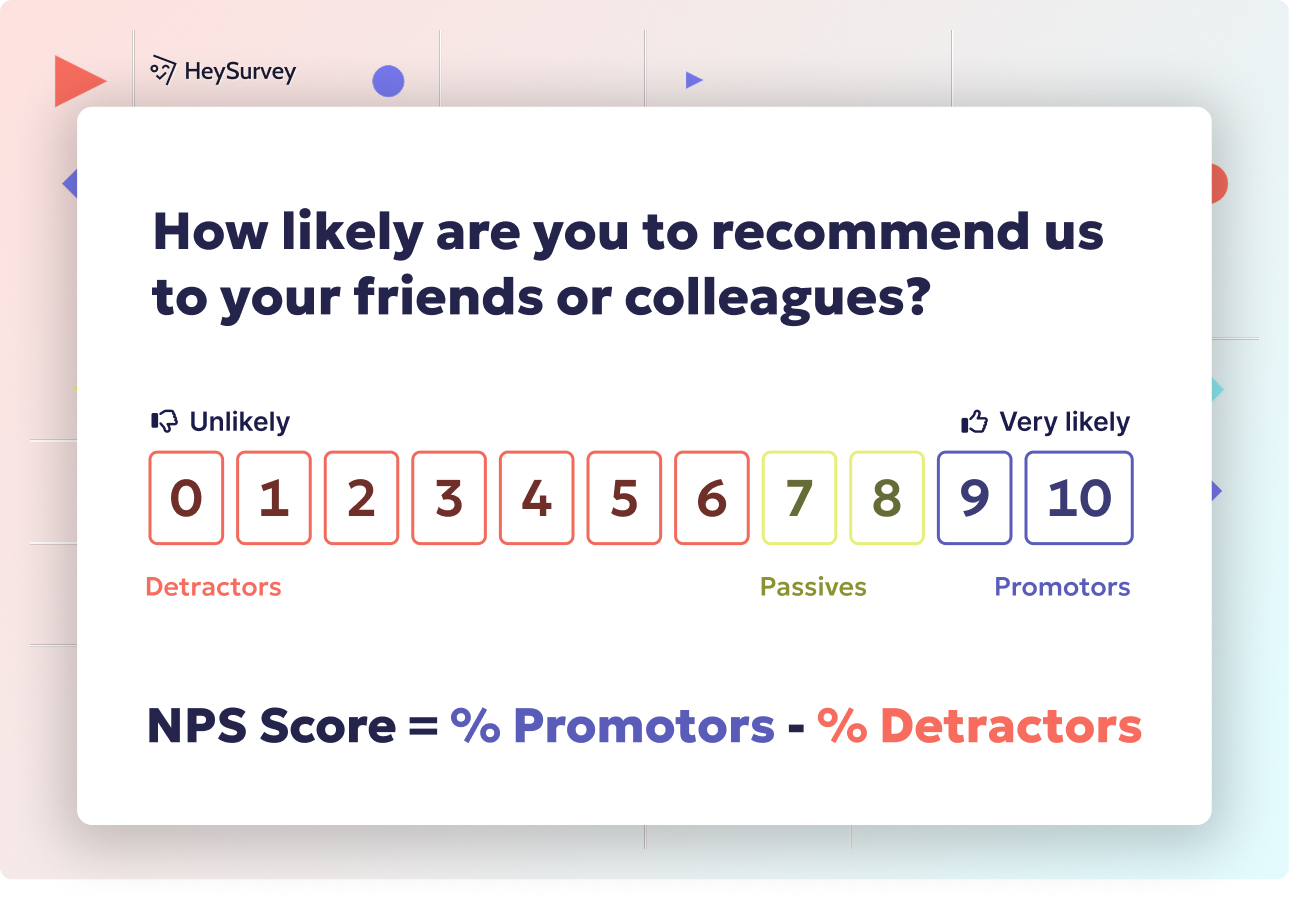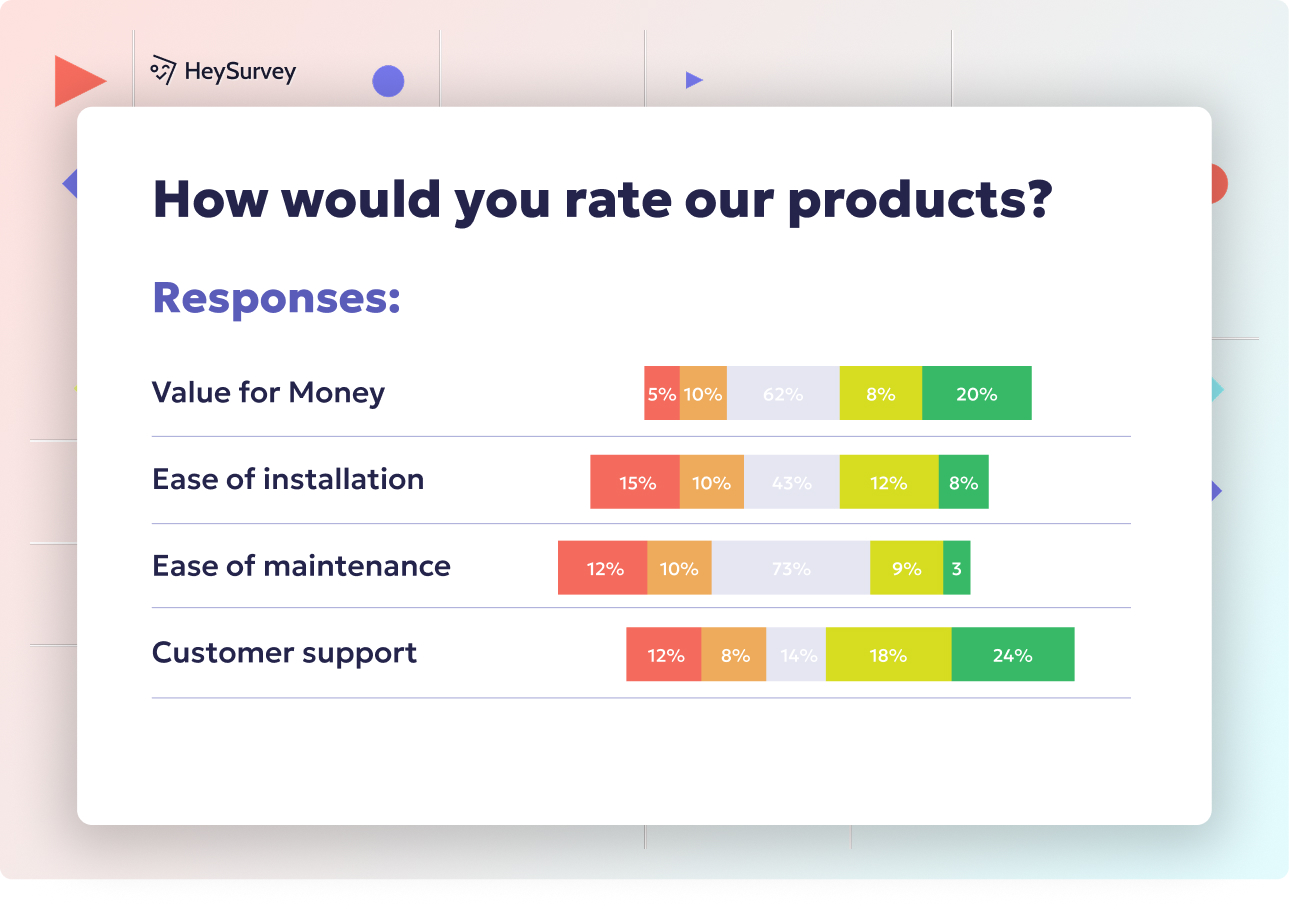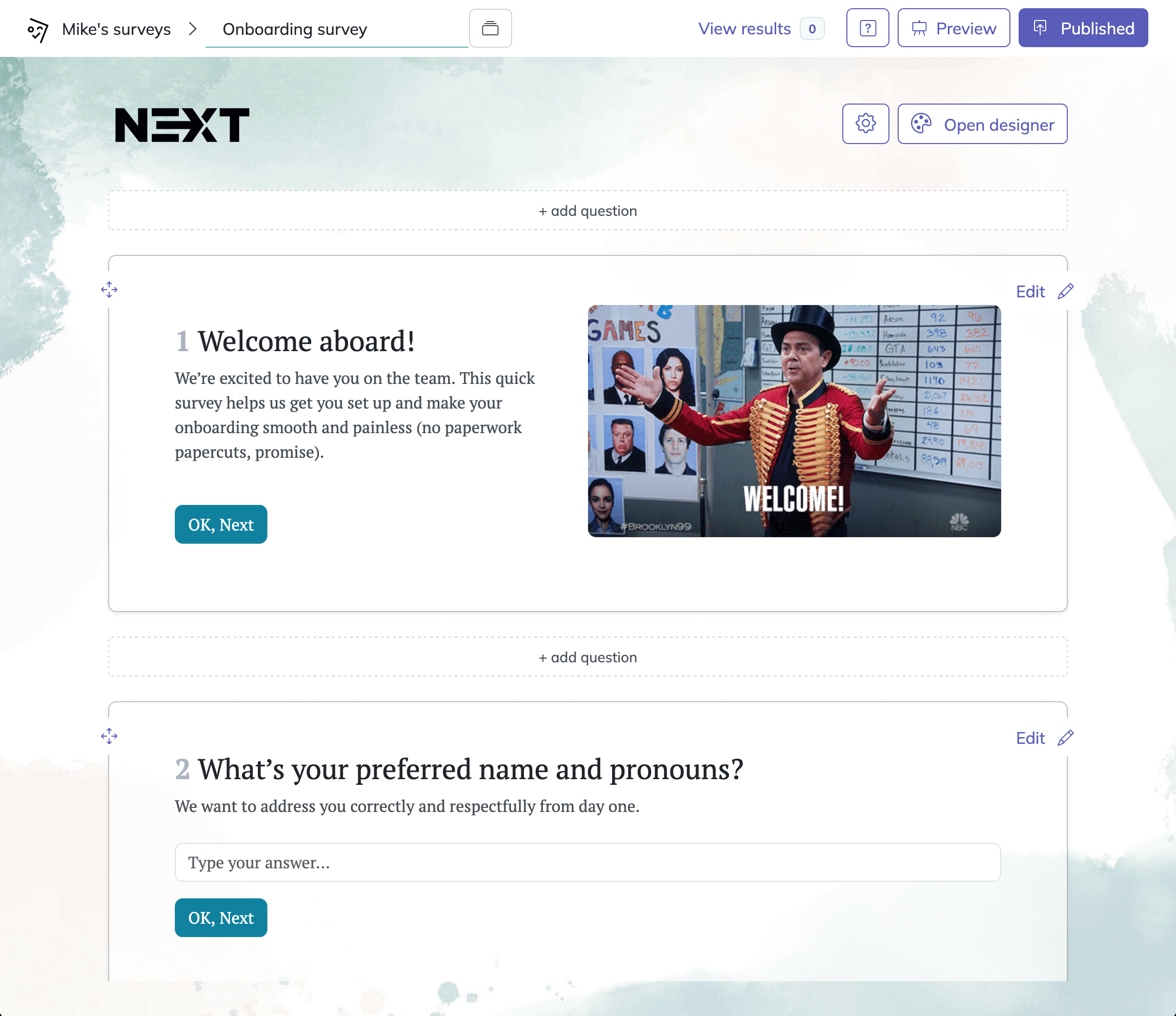25 Belonging Survey Questions: Types, Uses & Examples
Discover 8 proven belonging survey questions with 25+ ready-made examples to boost workplace inclusion, engagement, and retention effectively.
Belonging Survey Questions: Why They Matter and How to Use Them
In today's workplace, belonging isn't just a buzzword—it's a cornerstone of a thriving, engaged, and productive team. When employees feel they truly belong, they're more likely to stay, collaborate, and contribute their best work. This sense of belonging is closely tied to employee engagement, retention, productivity, and diversity, equity, and inclusion (DEI) efforts. (culturemonkey.io)
The business case for fostering belonging is compelling. Organizations that cultivate an inclusive environment often see:
- Reduced turnover: Employees are less likely to leave when they feel valued and connected.
- Stronger collaboration: A sense of belonging enhances teamwork and communication.
- Higher Net Promoter Scores (NPS): Engaged employees are more likely to recommend their workplace to others.
To effectively measure and enhance belonging, various survey types can be employed. Each serves a unique purpose and provides valuable insights. Below, we'll explore eight proven survey types, when to use them, and provide 40+ ready-made questions to get you started.
Employee Engagement Belonging Survey (Likert-Scale)
Why & When to Use
Conducting an Employee Engagement Belonging Survey annually or bi-annually helps benchmark your organization's overall culture. This survey is ideal for large, distributed workforces seeking quantifiable trend data on employee sentiments.
5 Sample Questions
- I feel a strong sense of belonging to this organization.
- I can be my authentic self at work.
- My contributions are valued by my team members.
- Leadership actively fosters a culture of inclusion.
- I see a future for myself at this company.
A study developed a 12-item unidimensional Workplace Belongingness Scale to effectively measure employees' sense of belonging within organizational settings. (researchgate.net)

Creating your belonging survey with HeySurvey is a breeze, even if you're totally new to it. Just follow these three easy steps to get your survey live — and a couple of bonus tips to make it shine!
Step 1: Create a New Survey
Kick things off by logging into HeySurvey (or start without an account if you just want to test). Click on Create Survey and choose either an empty sheet or a relevant pre-built template—there’s even a ready-to-go belonging survey template! This saves you time and gives you a structured start.
Step 2: Add Questions
Once inside the Survey Editor, hit Add Question and pick the type you want—Likert scales, multiple choice, or open-ended text work great for belonging questions. You can paste in your questions (like those sample ones above). Don’t forget to mark the must-answers as required to keep responses complete.
Step 3: Publish the Survey
When your questions are all set, click Preview to see your survey as your team will. Happy? Hit Publish, and voila — you get a sharable link to send out to your employees. Remember, you’ll need an account to publish and see responses.
Bonus Step 4: Apply Branding
Make your survey feel like it’s truly yours by adding your company logo and brand colors in the Designer Sidebar. This builds familiarity and trust.
Bonus Step 5: Define Settings or Use Branches
Head to the Settings Panel to set start/end dates, response limits, and completion redirects. Feeling adventurous? Use branching to tailor question paths based on previous answers — handy for diving deeper into specific belonging topics.
Ready to launch your belonging survey? Start now with the template below and uncover what makes your team tick!
Start with the Belonging Survey Template
Onboarding Belonging Survey
Why & When to Use
Deploy this survey at the 30-day and 90-day marks to identify early assimilation issues. It's critical for reducing first-year turnover and shortening time-to-productivity.
5 Sample Questions
- In my first weeks here, I felt welcomed by my team.
- I understand how my role connects to our company mission.
- I've established at least one meaningful relationship at work.
- I know where to find the resources I need to succeed.
- My manager has helped me feel included during onboarding.
A study found that a structured onboarding process significantly enhances employees' assimilation into organizational culture, leading to better integration and reduced turnover. (researchgate.net)
Inclusion & Diversity Cross-Section Belonging Survey
Why & When to Use
Conduct quarterly or bi-annual DEI health checks to analyze belonging scores across different demographic segments. This helps surface equity gaps and informs targeted DEI initiatives.
5 Sample Questions
- People from all backgrounds are treated fairly here.
- I see people like me represented in leadership roles.
- My ideas are heard and acted upon, regardless of my identity.
- The company celebrates diverse perspectives.
- I feel safe to voice concerns about discrimination or bias.
Team Pulse Belonging Micro-Survey
Why & When to Use
Implement 3- to 5-question monthly pulses to detect real-time shifts in sentiment. This is perfect for agile teams or during periods of rapid change.
5 Sample Questions
- This week, I felt included in key team decisions.
- I was recognized for my unique strengths.
- Team members supported one another effectively.
- Communication within the team made me feel connected.
- I look forward to collaborating with my teammates next week.
A study developed a 16-item Organizational Belonging scale with four factors—Be Myself, Acceptance, Value Diversity, and Connection—each significantly correlated with productivity and intent to stay. (tandfonline.com)
Remote & Hybrid Work Belonging Survey
Why & When to Use
Conduct semi-annual check-ins for distributed or hybrid teams to identify isolation risks, digital-divide issues, and resource gaps.
5 Sample Questions
- I feel connected to colleagues despite working remotely.
- Virtual meetings encourage equal participation from all locations.
- I have the technology I need to collaborate effectively.
- My manager creates opportunities for informal team bonding online.
- Company policies support my sense of inclusion as a remote/hybrid employee.
Exit Interview Belonging Survey
Why & When to Use
Administer during off-boarding to uncover hidden culture issues. This provides actionable data to reduce regrettable attrition.
5 Sample Questions
- To what extent did you feel you belonged at this organization?
- Were there moments you felt excluded? Please describe.
- Did lack of belonging influence your decision to leave?
- What could have increased your sense of inclusion?
- Would you recommend this company as an inclusive workplace?
Open-Ended Storytelling Belonging Survey
Why & When to Use
Deploy annually or after major culture initiatives to capture rich narratives. This is useful for qualitative depth that complements quantitative data.
5 Sample Questions
- Describe a time you felt a strong sense of belonging at work.
- Share an experience where you felt excluded. What happened?
- What practices help you feel valued here?
- How does leadership influence your sense of belonging?
- If you could change one thing to improve inclusion, what would it be?
Best Practices: Dos and Don’ts for Crafting Belonging Survey Questions
Creating effective survey questions is an art. Here are some dos and don'ts to guide you:
Dos:
- Use neutral language: Avoid leading questions that may bias responses.
- Keep scales consistent: Ensure that Likert scales are uniform across questions for clarity.
- Guarantee anonymity: Assure employees that their responses are confidential to encourage honesty.
- Segment results responsibly: Analyze data by demographics to identify specific needs without overgeneralizing.
- Act on findings quickly: Demonstrate that feedback leads to tangible changes to build trust.
Don’ts:
- Avoid loaded terms: Steer clear of emotionally charged language that may skew responses.
- Steer clear of yes/no traps: Pose questions that allow for nuanced answers rather than simple affirmatives or negatives.
- Don’t overlook intersectionality: Recognize that employees have multiple identities that intersect and influence their experiences.
- Never share raw comments verbatim: Respect privacy by summarizing open-ended responses without revealing individual identities.
- Don’t survey without follow-up action plans: Ensure that surveys lead to actionable outcomes to maintain credibility.
By thoughtfully crafting and implementing these surveys, you can gain valuable insights into your organization's culture and take meaningful steps toward fostering a more inclusive and engaging workplace.
Related Employee Survey Surveys

29 Essential Post Mortem Survey Questions for Project Success
Discover 25+ essential post mortem survey questions to improve projects, boost team morale, and d...

31 Change Readiness Survey Questions to Boost Your Success
Discover 25+ sample change readiness survey questions to assess attitudes, barriers, and confiden...

31 Retreat Survey Questions to Collect Actionable Feedback
Discover 26 essential retreat survey questions to gather actionable feedback before, during, and ...